Thomas Doherty: Cold War, Cool Medium: Television, McCarthyism, and American Culture (2003)
Filed under book | Tags: · cold war, film, history, mass media, politics, public broadcasting, television, united states

Conventional wisdom holds that television was a co-conspirator in the repressions of Cold War America, that it was a facilitator to the blacklist and handmaiden to McCarthyism. But Thomas Doherty argues that, through the influence of television, America actually became a more open and tolerant place. Although many books have been written about this period, Cold War, Cool Medium is the only one to examine it through the lens of television programming.
To the unjaded viewership of Cold War America, the television set was not a harbinger of intellectual degradation and moral decay, but a thrilling new household appliance capable of bringing the wonders of the world directly into the home. The “cool medium” permeated the lives of every American, quickly becoming one of the most powerful cultural forces of the twentieth century. While television has frequently been blamed for spurring the rise of Senator Joseph McCarthy, it was also the national stage upon which America witnessed—and ultimately welcomed—his downfall. In this provocative and nuanced cultural history, Doherty chronicles some of the most fascinating and ideologically charged episodes in television history: the warm-hearted Jewish sitcom The Goldbergs; the subversive threat from I Love Lucy; the sermons of Fulton J. Sheen on Life Is Worth Living; the anticommunist series I Led 3 Lives; the legendary jousts between Edward R. Murrow and Joseph McCarthy on See It Now; and the hypnotic, 188-hour political spectacle that was the Army-McCarthy hearings.
By rerunning the programs, freezing the frames, and reading between the lines, Cold War, Cool Medium paints a picture of Cold War America that belies many black-and-white clichés. Doherty not only details how the blacklist operated within the television industry but also how the shows themselves struggled to defy it, arguing that television was preprogrammed to reinforce the very freedoms that McCarthyism attempted to curtail.
Publisher Columbia University Press, 2003
ISBN 0231129521, 9780231129527
305 pages
PDF (updated on 2014-9-5)
Comment (0)Chto delat / What is to be done?, 38+ nos. (2003-) [Russian, English]
Filed under magazine | Tags: · activism, art, art criticism, capitalism, communism, critique, education, film, labour, literature, politics, theory
“Chto delat/What is to be done? was founded in early 2003 in Petersburg by a workgroup of artists, critics, philosophers, and writers from Petersburg, Moscow, and Nizhny Novgorod (see full list of participants on the web site) with the goal of merging political theory, art, and activism.
Since then, Chto delat has been publishing an English-Russian newspaper on issues central to engaged culture, with a special focus on the relationship between a repoliticization of Russian intellectual culture and its broader international context. These newspapers are usually produced in the context of collective initiatives such as art projects or conferences.”

Issue 1, August 2003
Realised in the framework of the festival of contemporary art “Artkliazma”, 29.08 – 07.09.2003
HTML

Autonomous Zones
Issue 2, September 2003
Realised in the framework of “Rohto” project /28.10-14.09.2003, at Central Exhibition Hall/
HTML

Emancipation from/of Labour
Issue 3, 2004
Realised as a part of an art project by Dmitry Vilensky “Negation of Negation” in a frame of the exhibition “Faster than History”, The Museum of Contemporary Art KIASMA, 2004
HTML

The International Now-here
Issue 4, April 2004
HTML

Love & Politics
Issue 5, May 2004
Realized in the framework of the exhibition “Watch Out! Art from Moscow and St. Petersburg”, Oslo, 27.05-05.09.2004
HTML

Revolution or Resistance?
Issue 6, August 2004
Realized in the framework of the festivals: Nordic & Russian Poetry, Art & Film Event “Swinging With Neighbours” in Stockholm 17-23rd of August, 2004, and “Art Kljazma” festival, Moscow
HTML

Drift. Narvskaja Zastava
Issue 7, September 2004
Realized in the framework of the festival Contemporary Art in Traditional Museums, St Petersburg, 25.09.-25.10.2004
HTML

State of Emergency
Issue 8, January 2005
Realized in the framework of conference “Klartext! The Status of Political in Contemporary Art and Culture”, January 14-16, 2005, Kunstlerhaus Bethanien and Volksbuhne, Berlin
HTML

What Do We Have in Common?
Issue 9, May 2005
This publication is part of the exhibition project “The Builders” realized on the occasion of the exhibition Collective Creativity, at Kunsthalle Fridericianum Kassel, from May 1 – July 17, 2005
HTML

How Do Politics Begin?
Issue 10, September 2005
HTML (Part 1), HTML (Part 2)

Why Brecht?
Issue 11, January 2006
Realized in the framework of exhibition “Capital” (It Fails Us Now) /07.01.-15.02.2006/, Kunstihoone, Tallinn, Estonia with the generous support of the NIFCA.
HTML

(Im)possible Spaces
Issue 12, March 2006
Realized in a frame of the exhibition “Contested Spaces in Post-Soviet Art” at Sidney Mishkin Gallery, New York / 24.03. 2006 – 26.04.2006/
HTML

Culture and Protest. Another Power is Possible
Issue 13, July 2006
Realized in the framework of the 2nd Russian Social Forum during the G-8 Summit in Petersburg.
HTML

Self-Education
Issue 14, September 2006
Realized in the framework of the exhibition “Self-Education” at the State Center for Contemporary art, 06.09.-30.09.2006
HTML

Reactionary Times
Issue 15, February 2007
Appeared in the framework of documenta 12 magazines, a collective editorial project linking worldwide over 80 print and on-line periodicals, as well as other media.
HTML

Potentialities Beyond Political Sadness
Issue 16, March 2007
Realized in collaboration with and funded in part by the “Space for Actualisation”, Hamburg and with the support of the Iaspis International Artists’ Studio Program in Sweden
HTML

Debates on the Avant-Garde
Issue 17, August 2007
Co-produced by WorkMethod, Paris, with the support of American Center Foundation, and Frac Ile-de-France/Le Plateau, Paris in the context of the project “Société Anonyme”.
HTML

Becoming a Mother. The work of care in contemporary capitalism
Special issue, November 2007
Realised in framework of the exhibition “Becoming a mother” that took place at Botkyrka Konsthall from 24 November 2007 till 1 March 2008 with the support from Labyrint Press and Swedish Institute.
HTML

Basta!
Special issue, February 2008
HTML, PDF

Critique and Truth
Issue 18, March 2008
Published on the occasion of the exhibition “Have the Cake and Eat It, Too. Institutionskritik als instituierende Praxis”, March 13-April 19, 2008, Kunsthalle Exnergasse Vienna (http://www.wuk.at/kunsthalle). from 24 November 2007 till 1 March 2008 with the support from Labyrint Press and Swedish Institute
HTML

Knowledge in Action
Special issue, September 2008
Published in collaboration with Street University on the occasion of the European Social Forum 2008 in Malmö, September 17-21, 2008, (http://www.esf2008.org/).
HTML

What Does it Mean to Lose? The Experience of Perestroika
Issue 19, September 2008
Produced on collaboration with U-TURN Quadrennial for Contemporary Art with the support of the Culture Programme of the European Union and Kulturkontakt Nord.
HTML, PDF

When Artists Struggle Together
Special issue, November 2008
HTML, PDF

What is the Use of Art?
Issue 25, March 2009
Published on the occasion of the exhibition project realised by Chto delat workgroup ‘Plug In #51: Activist Club’ at the Van Abbemuseum, Eindhoven
HTML, PDF

Another Commons: Living / Knowledge / Act
Issue 26, 2009
HTML

The Great Method
Issue 27, September 2009
HTML, PDF

Make Film Politically. Contemporary Filmmaking and the Soviet Avant-Garde
Special issue (later as Issue 28), September 2007
Published in framework of the exhibition “Electrification of the brains” that took place from 21 September to 3 November 2007 in Dresden.
HTML, PDF

Transitional Justice
Special issue, November 2009
HTML, PDF

Whose City Is This?
Issue 29, August 2010
HTML, PDF
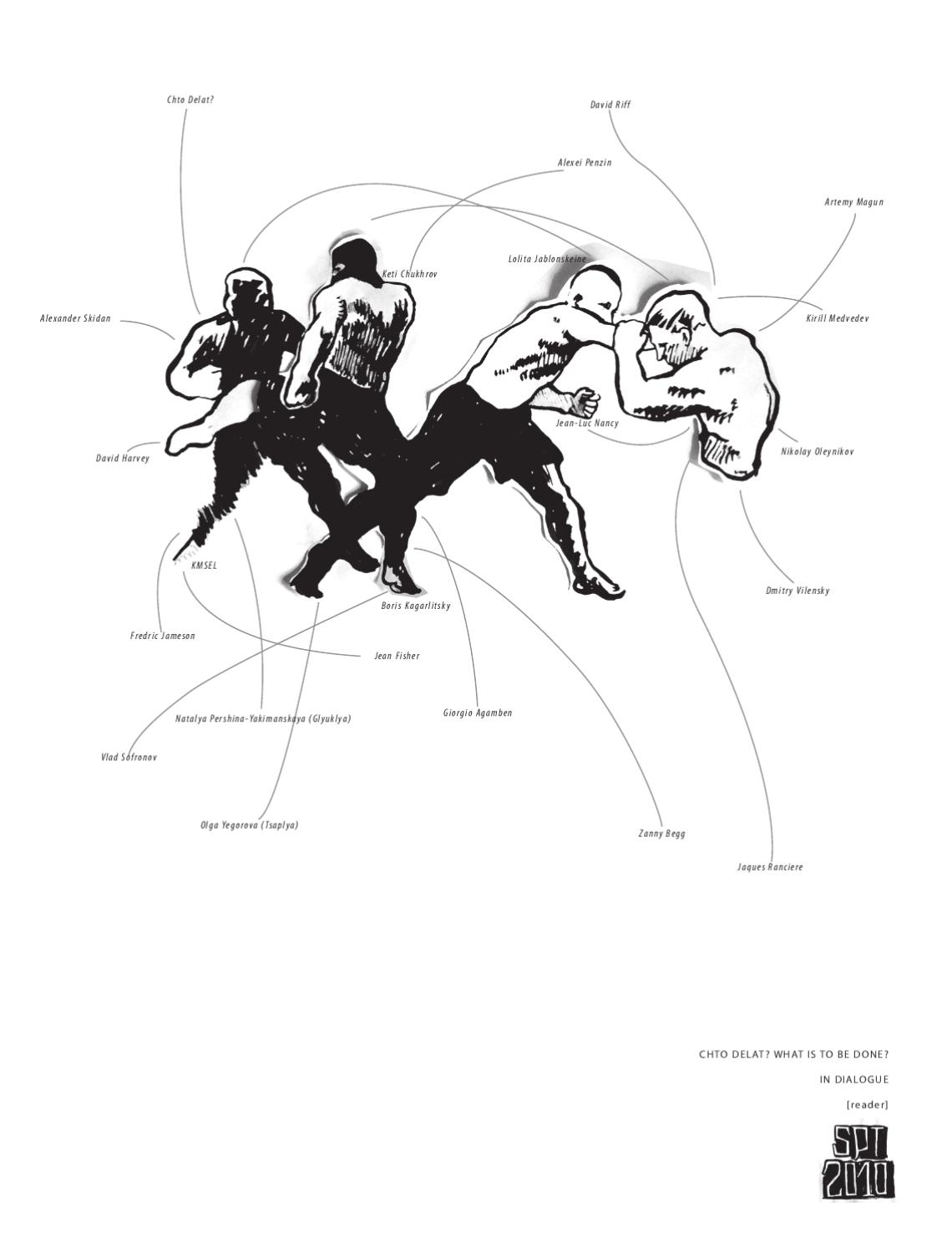
Chto delat? What is to be Done? In Dialogue [reader]
Special issue, September 2010
Published on occasion of the exhibition project What is to be done? … the urgent need to struggle at ICA, London (9 Sep-24 Oct 2010).
PDF

Living, Thinking, Acting politically
Issue 30, 2010
A brief analysis of the 48-Hour Communal Life Seminars
HTML, Issuu

Tragedy or Farce?
Issue 31, December 2010
HTML, PDF
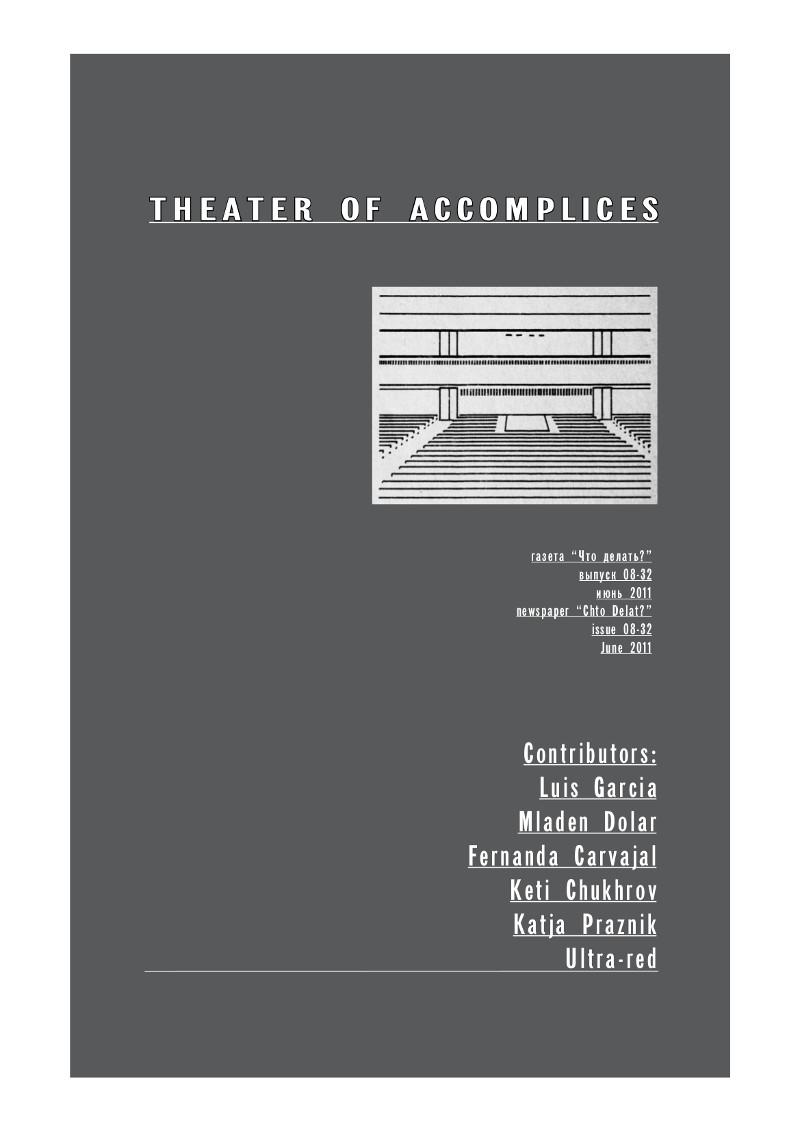
Theater of Accomplices
Issue 32, June 2011
HTML, PDF

Against Slavery
Issue 33, October 2011
HTML, PDF

In Defence of Representation
Issue 34, March 2012
HTML, PDF
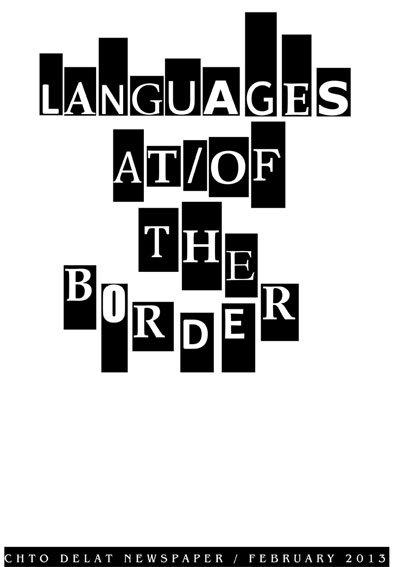
Language at/of the Border
Issue 35, February 2013
“The idea for this issue arose when we begin working on our film A Border Musical, whose screenplay is also printed here. This film is based on a study of the situation on both sides of the Russian-Norwegian border: we were interested in how a range of differences, which inevitably serve as sources of conflict in border areas, shape the subjectivity of people in daily contact with each other.” (from the Editorial)
Published on the occasion of the Barents Spectacle 2013 in collaboration with Border Aesthetics.
HTML, PDF
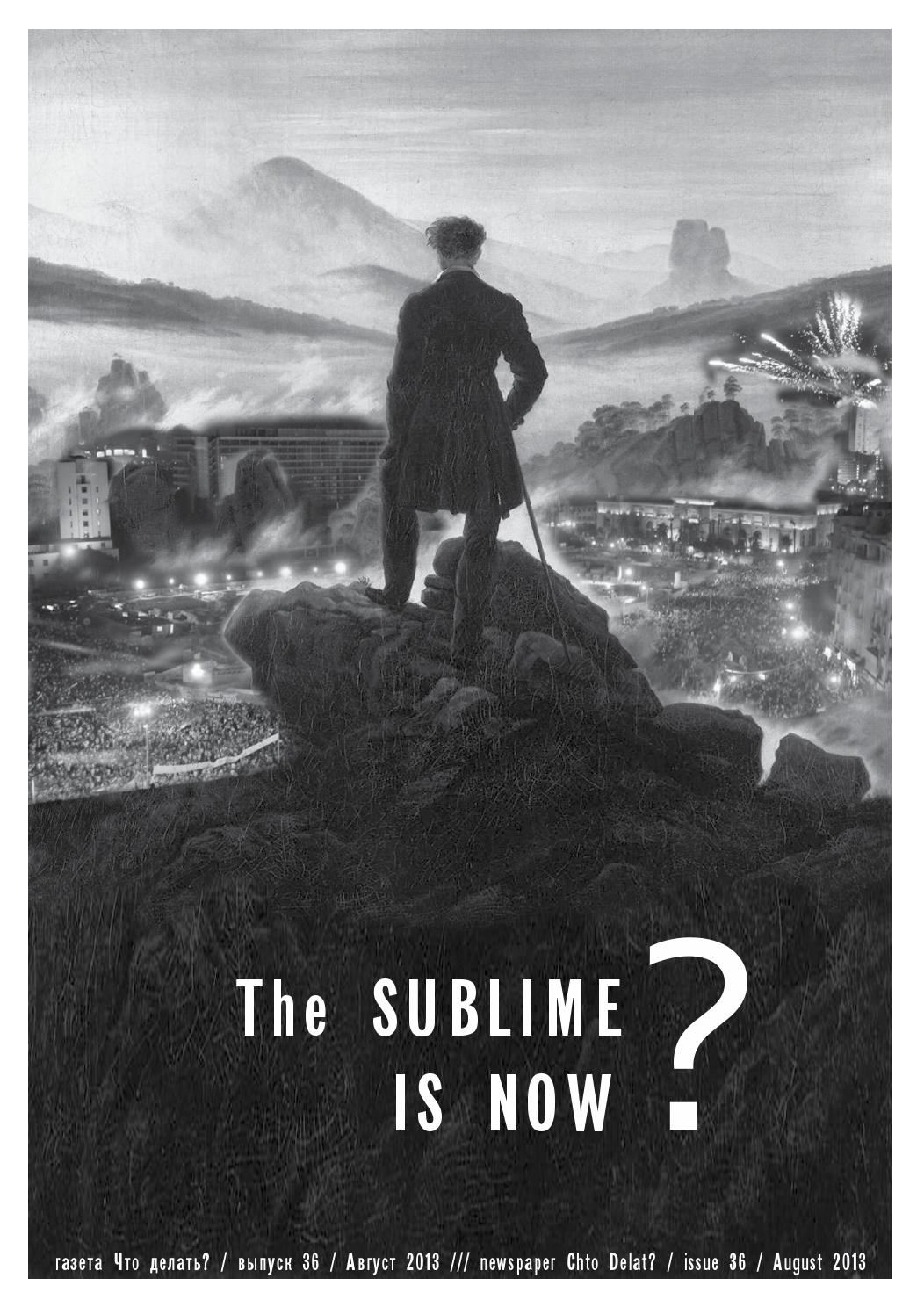
The Sublime is Now?
Issue 36, August 2013
HTML, PDF
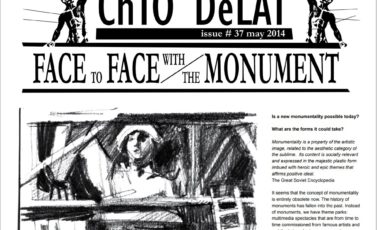
Face to Face with the Monument
Issue 37, May 2014
HTML, PDF
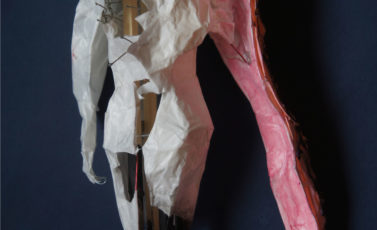
Time Capsule: Artistic Report on Catastrophe and Utopia
Issue 38, Nov 2014
HTML, PDF
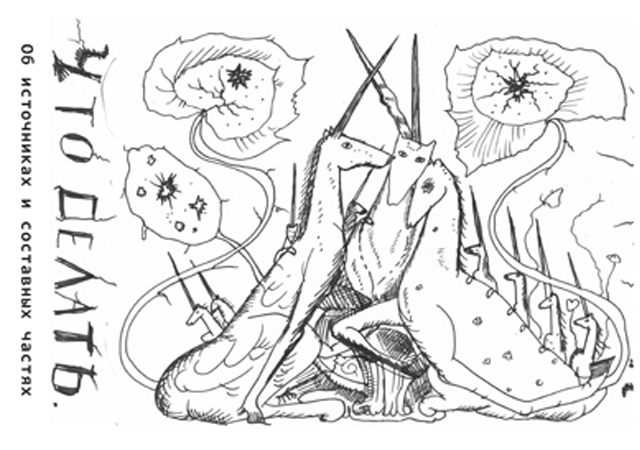
On the sources and currents of Chto Delat
Issue 39, Mar 2015
Issuu
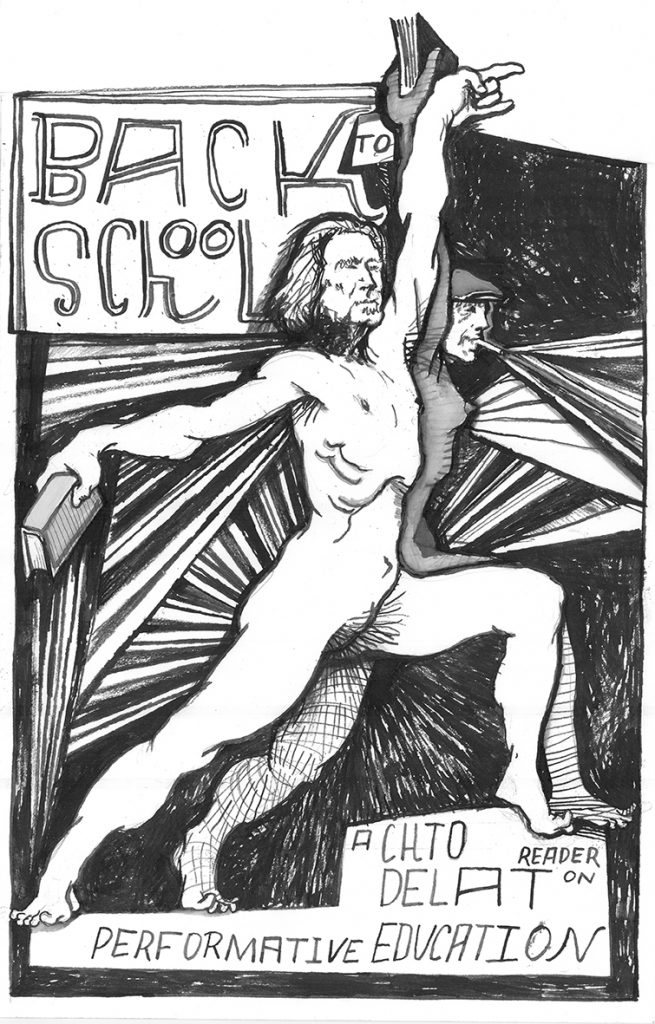
Back to School: Reader on Performative Education
Jul 2015
PDF
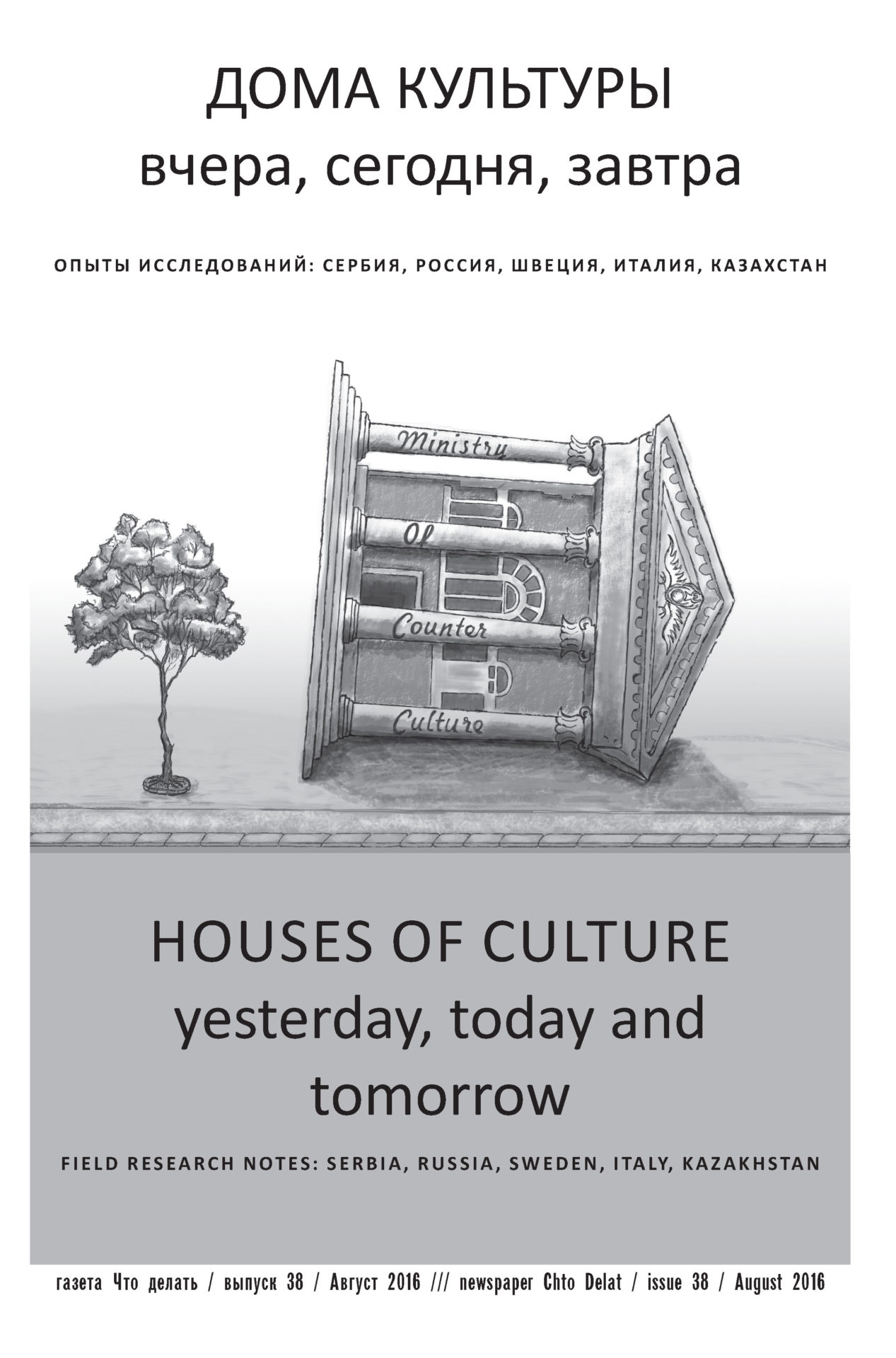
Houses of Culture
Issue 38, Aug 2016
HTML, PDF
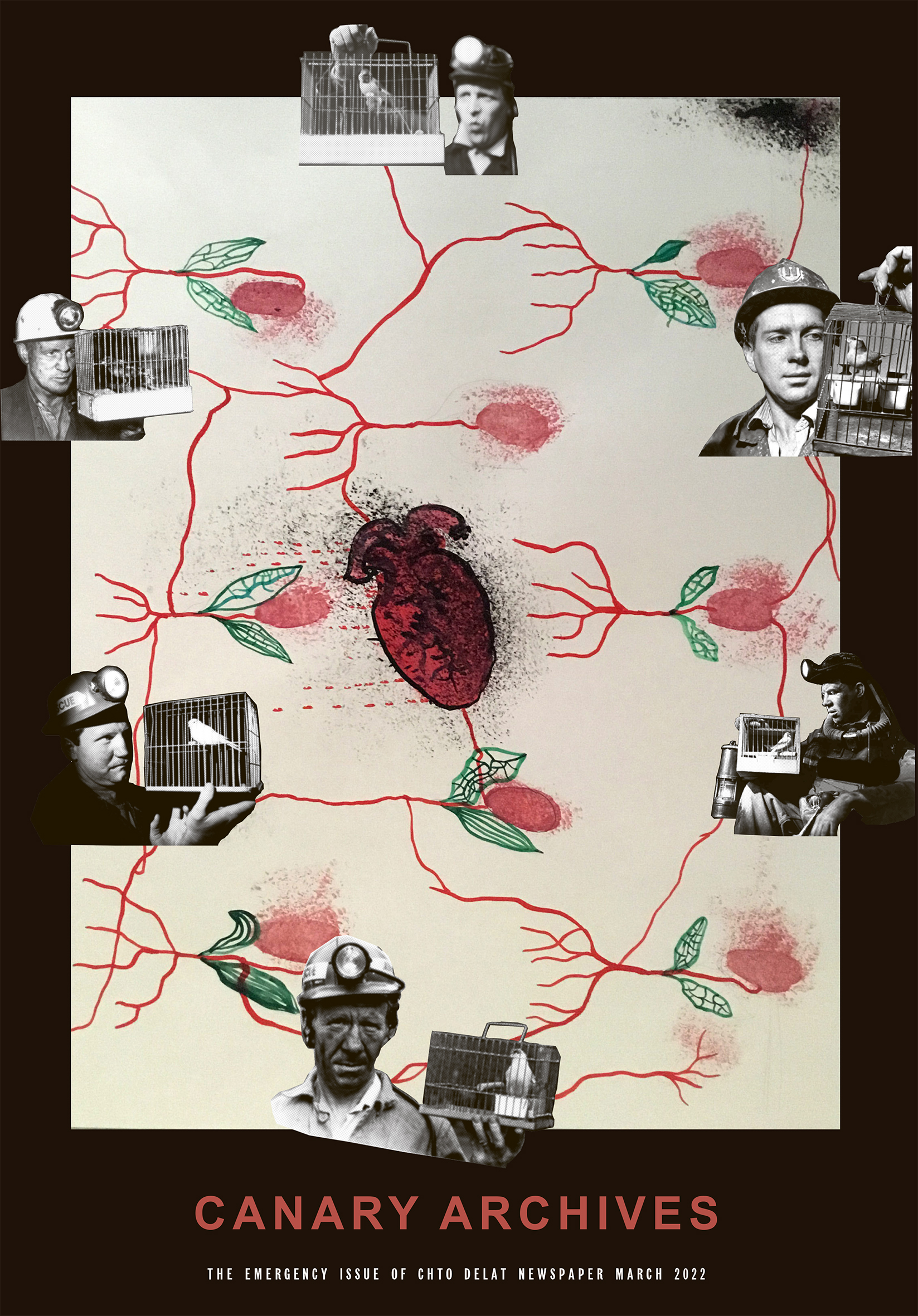
Canary Archives
Emergency issue, Mar 2022
HTML, PDF
Published under Creative Commons license.
(links updated on 2024-02-19)
Comment (0)Jacques Rancière: The Future of the Image (2007)
Filed under book | Tags: · aesthetics, art, film, politics

A leading philosopher presents a radical manifesto for the future of art and film
In The Future of the Image, Jacques Rancière develops a fascinating new concept of the image in contemporary art, showing how art and politics have always been intrinsically intertwined. Covering a range of art movements, and thinkers such as Foucault, Deleuze, Adorno, Barthes, Lyotard and Greenberg, Rancière argues that contemporary theorists of the image are suffering from religious tendencies. He suggests that there is a stark political choice in art: it can either reinforce a radical democracy, or create a new reactionary mysticism. For Rancière there is never a pure art: the aesthetic revolution will always embrace egalitarian ideals.
Published by Verso, London, 2007
ISBN: 1844671070, 9781844672974
160 pages
Review (Robert Porter)
Review (Brian Dillon)
More info (publisher)
More info (google books)
PDF (Index missing; updated on 2012-7-14)
Comment (0)
